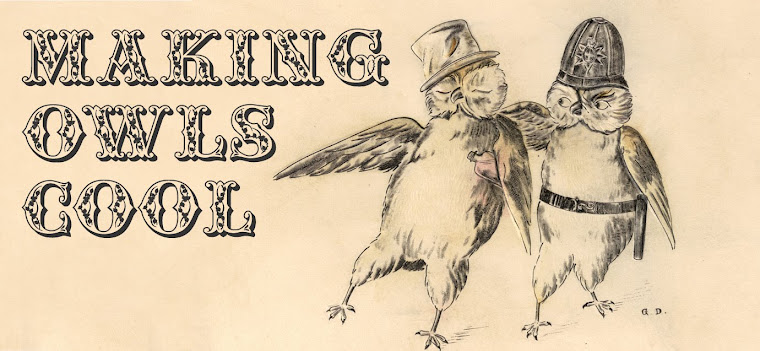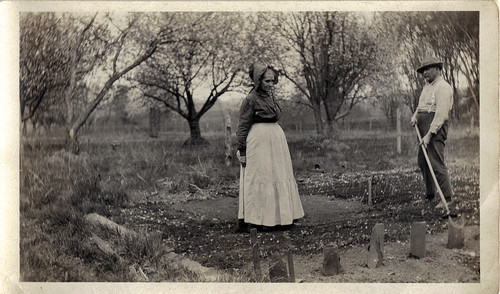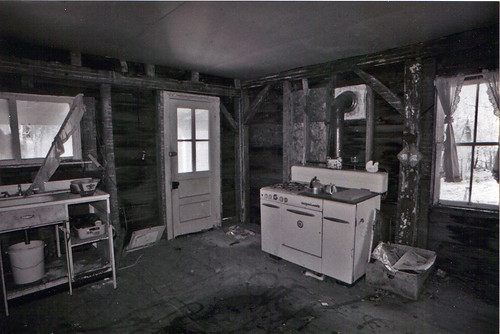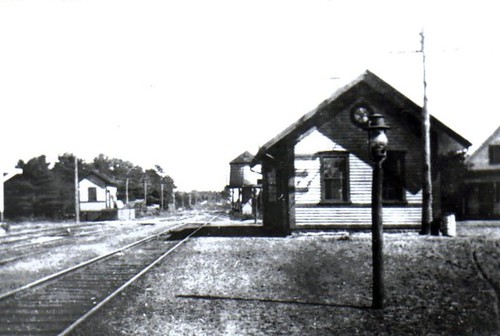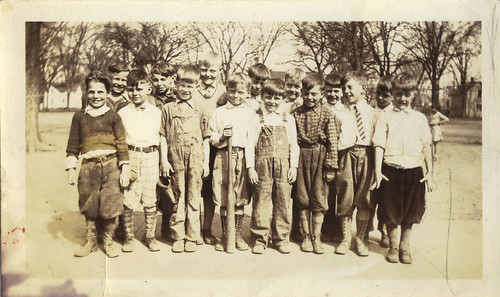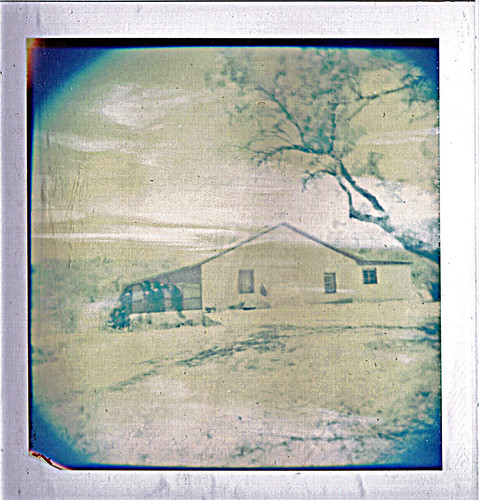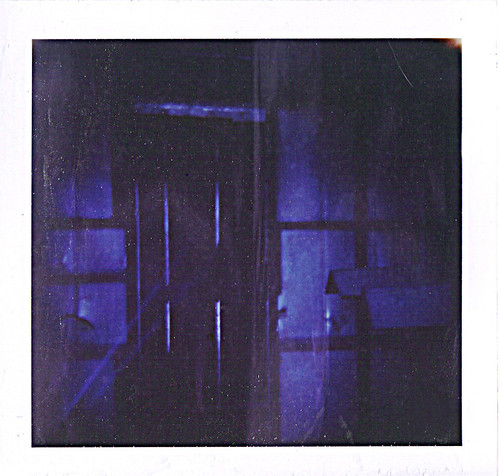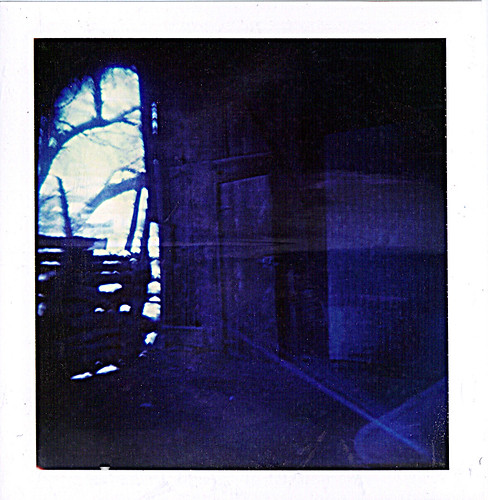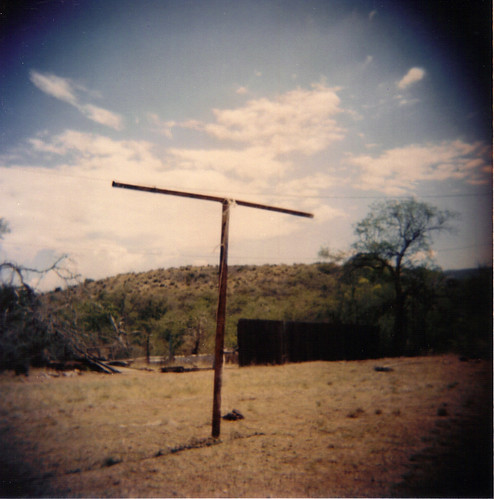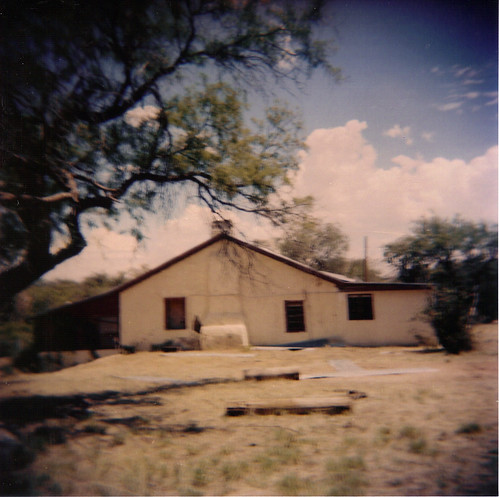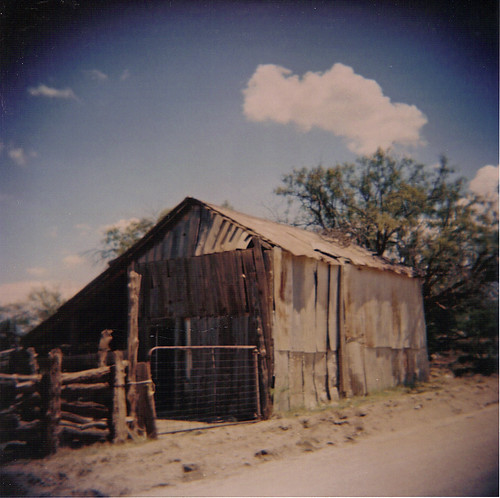I was reading Gear Junkie just now and I came across this article. Looks like SIGG bottles, which were marketed as an alternative to plastic because they allegedly didn't leak BPA (a toxic compound) actually leak BPA. It's only supposed to apply to water bottles from 2008 and before (like ours), but it's pretty unethical for SIGG to allow people to turn to them as a safe alternative knowing the entire time that they're product contained BPA.
Read the Gear Junkie article for more information.
SIGG bottles contain BPA | Gear Review | Gear Junkie
Read this article from "Stuff White People Like" if you want to laugh at people like me.
#76 Bottles of Water
Wednesday, September 30, 2009
Farmer and Wife
Fall might not be the right season to start thinking about gardening, but I thought I'd post this picture anyhow. I don't know where this picture is from (well, it's from the swap meet, but I mean originally) or when it was taken. It looks like a very pretty place, though. It would be easy to trivialize or romanticize there subjects with unnecessary, pastoral language, but I think I like them just the way they look here.
Monday, September 28, 2009
Lauritz Philinsen
This is a portrait take by a Dutch photographer named L. Philisen who worked in Amager, a island connected to Copenhagen. The children look like boys dressed as girls. Dressing very young boys in girl's clothing was not unheard of in Victorian and post-Victorian American and England, though I don't know if it carried over to Denmark. The child on the left appears to have earrings, which might suggest that these are actually little girls. Perhaps they're with their grandmother.
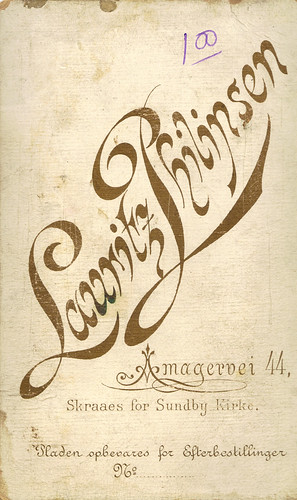
I have attempted to translate the text on the back of this photograph from Danish. I cannot claim any great knowledge of Danish. In truth, have no knowledge of Danish, and, being vegan, I don't even eat Danishes. I do, however, really enjoy translating (<--nerdy). So please forgive the shoddiness of the translation or feel free to correct it if you know Danish.
So here goes...
Amagervei 44 - This seems to be the address
Skraaes for Sundby Kirke - Across from (at an angle to) Sundby Church.
Pladen opbevares for Efterbestillinger - Records to be kept after orders.
Unfortunately, I've been unable to find any thing about Lauritz Philinsen online, but I can give a bit more general information on the photograph itself. It's a carte-de-visite, which was a inexpensive photo reproduction made to distribute to friends and relatives. They were also made to fit into photo albums. Judging by the design of this photograph (if we are to assume that trends in Denmark coincided with trends in the US and UK) then this picture is from the 1870's to 1890's.

I have attempted to translate the text on the back of this photograph from Danish. I cannot claim any great knowledge of Danish. In truth, have no knowledge of Danish, and, being vegan, I don't even eat Danishes. I do, however, really enjoy translating (<--nerdy). So please forgive the shoddiness of the translation or feel free to correct it if you know Danish.
So here goes...
Amagervei 44 - This seems to be the address
Skraaes for Sundby Kirke - Across from (at an angle to) Sundby Church.
Pladen opbevares for Efterbestillinger - Records to be kept after orders.
Unfortunately, I've been unable to find any thing about Lauritz Philinsen online, but I can give a bit more general information on the photograph itself. It's a carte-de-visite, which was a inexpensive photo reproduction made to distribute to friends and relatives. They were also made to fit into photo albums. Judging by the design of this photograph (if we are to assume that trends in Denmark coincided with trends in the US and UK) then this picture is from the 1870's to 1890's.
Sunday, September 27, 2009
moominsean
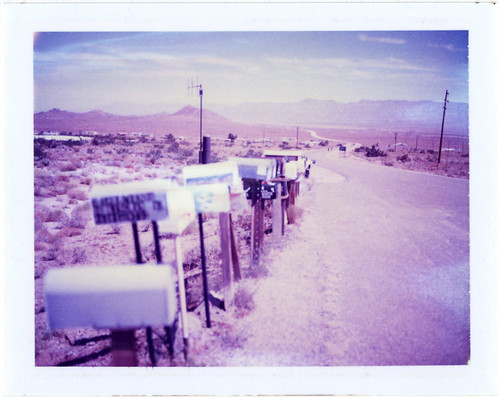
originally uploaded by moominsean.
I've had a really hard time capturing the sense of place in Arizona since moving here from New England a bit over two years ago. It's wide open and many objects seem commonplace to me. I could navigate the close roads and small spaces of New England just fine; there's an inexhaustible supply of 18th and 19th century buildings, old cemeteries, bridges, waterways, abandoned industrial buildings, and trees. I don't really have an eye for Arizona. I see great landscapes, but other than that I struggle to find a way to capture the feeling of what I'm seeing.
Then one day I was scrolling through myriad photos of saguaros in an Arizona Flickr group when I came across an interesting Polaroid by a photographer with the user name "moominsean." I checked out the rest of his photography and instantly knew that he is accomplishing exactly what I wished I could - he captures a sense of place in photos of the southwest.
Sean (which is, I assume, his name) uses a combination of Polaroids and modified toy cameras to take his pictures. The results are rad. The tone of the toy cameras and Polaroids work for Arizona. Many of the places out in expanses of the state that aren't Phoenix, Flagstaff or Tucson support only small populations of miners, ex-miners, ranchers, retirees, and folks working for the state. Those places seem caught in the past and Sean's photography takes the present moment and, by passing it through the lenses his unique cameras, creates images that represent not only how that moment looks, but also how it feels.
I also found his blog, moominstuff. I've heard people say that lomography, Polaroids and toy cameras are an easy medium to use and claim that the cameras, not the photographers, produce the results. I would argue that for photographers like myself who merely buy and use such cameras, this statement only partly true. I counter that if I could afford a digital Hasselblad with a lighting set-up and all the gadgets, then in that case the camera would be just as responsible for the great results as the cheap cameras. Of course, choosing your tool is part of the photographer's decision and the photographer's choice of camera is as essential to the shot as the composition, the lighting, or darkroom/Photoshop work. Sean not only chooses his cameras, but modifies them. He personally creates his tools, a process that further invests him in the quality of the images he creates. And on his blog, he's kind enough to share that process.
Sean's Flickr page has a bit over 2000 photographs, mostly of the southwest, but he also has some great photos of Japan. It's totally worth spending a while scrolling through the pages of his photography. My personal favorites are his shots of Humphrey's Peak.
The blog - moominstuff
The photographs - moominsean
The cameras - moomincameras
Saturday, September 26, 2009
Worcester Art Museum Postcard
I bought this old Worcester Art Museum postcard at an antique store here in Tucson. Such things raise questions about circulation and the paths things take. This postcard was sent to Troy, NY from Worcester, MA in 1936. So what's it doing in Tucson, AZ in 2009? Maybe the mystery of this object's life is part of its appeal.
When I was an undergraduate at Assumption College in Worcester, my students ID got me into the art museum for free. It's really a very good museum and some of the exhibits that come through are first rate. The museum is bigger now than it looks on this postcard.
The back of the postcard includes a brief description of the museum: "Founded by Stephen Salisbury, 1896 for benefit of all the people in the City of Worcester. The Museum is on Salisbury Street. Contains galleries of paintings and sculpture, together with collections of various objects of art. Special exhibits are in progress in one or more of the galleries."

This is the back of the postcard. Apparently Mrs. Hegemen (the name's a bit tricky to read) was visiting her sister in Worcester. She writes to Mrs. Freda Steinquist. She writes, "Here at my sister's enjoying myself. Keep well until I get home from Worcester. Here (sic) from me soon with love. Mrs. Hegemen."
I tried to do a little research to see if I could find anything about the people. All I could gather is that Freda Stenquist lived in Troy, New York at some point, but she passed away in Cook, Illinois in 1966.
When I was an undergraduate at Assumption College in Worcester, my students ID got me into the art museum for free. It's really a very good museum and some of the exhibits that come through are first rate. The museum is bigger now than it looks on this postcard.
The back of the postcard includes a brief description of the museum: "Founded by Stephen Salisbury, 1896 for benefit of all the people in the City of Worcester. The Museum is on Salisbury Street. Contains galleries of paintings and sculpture, together with collections of various objects of art. Special exhibits are in progress in one or more of the galleries."

This is the back of the postcard. Apparently Mrs. Hegemen (the name's a bit tricky to read) was visiting her sister in Worcester. She writes to Mrs. Freda Steinquist. She writes, "Here at my sister's enjoying myself. Keep well until I get home from Worcester. Here (sic) from me soon with love. Mrs. Hegemen."
I tried to do a little research to see if I could find anything about the people. All I could gather is that Freda Stenquist lived in Troy, New York at some point, but she passed away in Cook, Illinois in 1966.
Friday, September 25, 2009
Time Wearing Out Memory and an Unusual Coincidence
This photo was taken somewhere in Schoharie County, Upstate New York in Winter 2006.
Here's a neat story about this photo. About 9 months ago we were in a bookstore in Tucson AZ where we live and Erin was looking at a photography magazine when a picture looked familiar. It was a photograph from inside this house. We were very surprised because this place was quite remote and unassuming. Turns out the photo in the magazine was from a book entitled Time Wearing Out Memory: Schoharie County by Steve Gross and Susan Daley. We ended up buying the book. It's fantastic.
Here are some more sights with great photos, stuff about Time Wearing Out Memory and Schoharie County, New York.
Here are some other photos from our trip to Schoharie County.
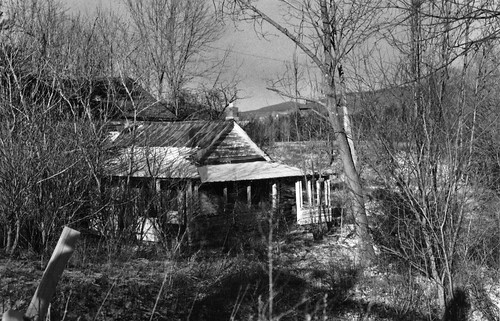
This is the house that is in Time Wearing Out Memory.
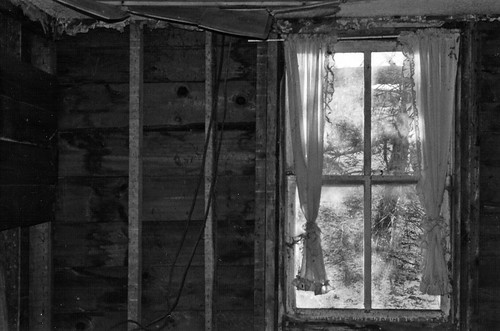
This window was in the kitchen.
The following photos are from a different house we explored near the first house.
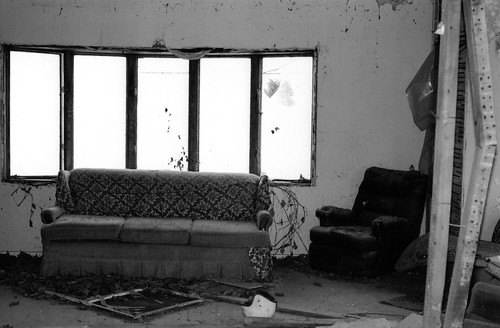
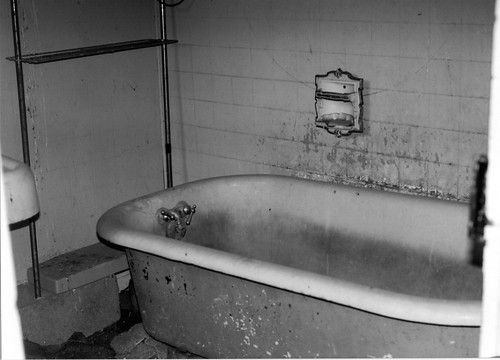
I found this tub up a rickety flight of stairs. The second floor was not stable, but I think the pipes helped hold this heavy tub up there.
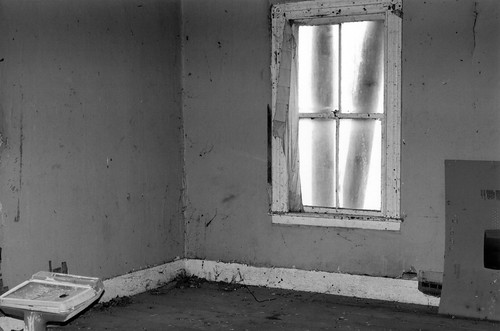
Here's a neat story about this photo. About 9 months ago we were in a bookstore in Tucson AZ where we live and Erin was looking at a photography magazine when a picture looked familiar. It was a photograph from inside this house. We were very surprised because this place was quite remote and unassuming. Turns out the photo in the magazine was from a book entitled Time Wearing Out Memory: Schoharie County by Steve Gross and Susan Daley. We ended up buying the book. It's fantastic.
Here are some more sights with great photos, stuff about Time Wearing Out Memory and Schoharie County, New York.
Here are some other photos from our trip to Schoharie County.

This is the house that is in Time Wearing Out Memory.

This window was in the kitchen.
The following photos are from a different house we explored near the first house.


I found this tub up a rickety flight of stairs. The second floor was not stable, but I think the pipes helped hold this heavy tub up there.

The National Parks: America's Best Idea
 Ken Burns' new documentary, "The National Parks: America's Best Idea" premiers on PBS this Sunday, September 27th. For us here in Tucson, that means KUAT at 8:00 P.M. There are six installments. I haven't been this excited about something on television since PBS aired "We Shall Remain," on American Experience. It was a five part series on Native Americans. You can (and should) watch it online.
Ken Burns' new documentary, "The National Parks: America's Best Idea" premiers on PBS this Sunday, September 27th. For us here in Tucson, that means KUAT at 8:00 P.M. There are six installments. I haven't been this excited about something on television since PBS aired "We Shall Remain," on American Experience. It was a five part series on Native Americans. You can (and should) watch it online.Wednesday, September 23, 2009
Spectropia or Surprising Spectral Illusions Showing Ghosts Everywhere and of Any Colour
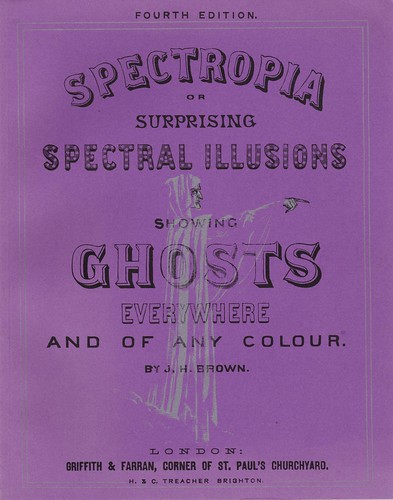
Spectropia (the full title is listed in the post title) was published in 1863. Written by J.H. Brown, the book using 19th century knowledge of optics to explain how people see ghosts. Brown's introduction to the fourth edition states: "The following Illusions are founded on two well-known facts; namely, the persistency of impressions, and the production of complementary colours, on the retina." The book is split into two parts. The first part gives "directions for seeing the spectres" and the second part is a "brief and popular, as well as a scientific, description of the manner in which the spectres are produced."
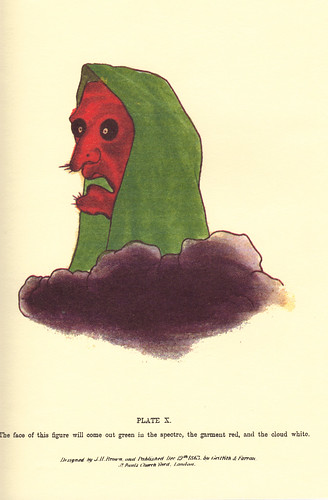
Here's how the book works in Brown's own words:
To see the spectres, it is only necessary to look steadily at the dot, or asterisk, which is to be found on each of the plates, for about a quarter of a minute, or while counting about twenty, the plate being well illuminated by either artificial or day light. Then turning the eyes to the ceiling, the wall, the sky, or better still to a white sheet hung on the wall of a darkened room (not totally dark), and looking rather steadily at any one point, the spectre will soon being to make its appearance, increasing in intensity, and then gradually vanishing, to reappear and vanish again; it will continue to do so several times in succession, each reappearance being fainter than the one preceding. Winking the eyes, or passing a finger rapidly to and fro before them, will frequently hasten the appearance of the spectre, especially is the plate has been strongly illuminated.
Brown goes on to describe various lighting circumstances and possible outcomes of attempting to see the ghostly images before moving onto the more scientific explanation.
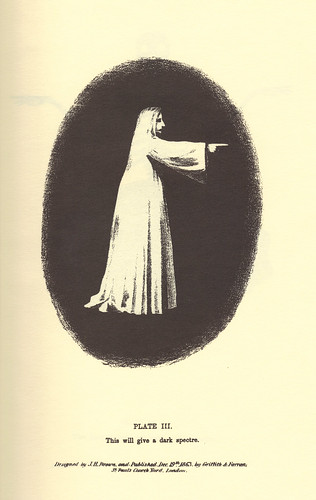
It really works! We've done it several times. The bottom of each plate tells how the spectre will appear. The bottom of the above plate states, "This will give a dark spectre."
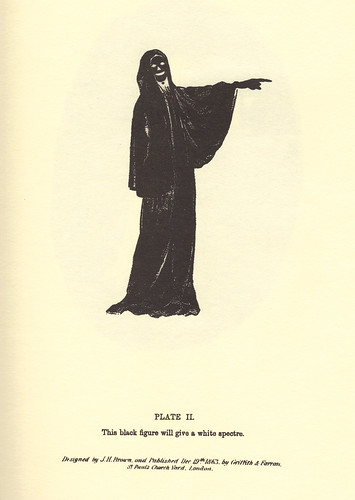
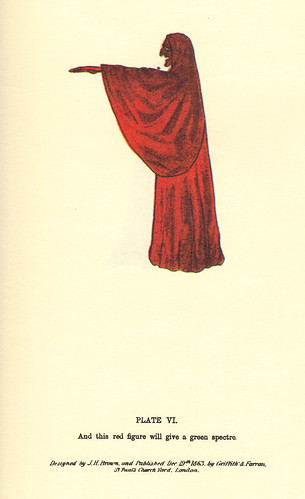
I attempted to do some research on J.H.Brown and the book, but, to my surprise, I couldn't find anything written about it. As someone who conducts research of cultural artifacts such as this, I can't believe I couldn't find anything! If someone could direct me toward some illuminating research I 'd appreciate it.
It should also be mentioned that the edition I own and reference in this post is a reissue of the 4th edition done by Pryor Publications in 1993. I checked out their website and found that they're out of the U.K. (so all prices are in pounds) and they have all sorts of really interesting reissued publications. Check out Pryor Publications here.
Tuesday, September 22, 2009
Calcutta Through A Plastic Lens
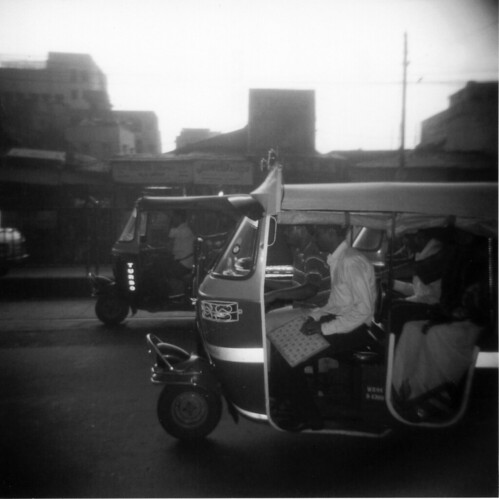
Erin and I went to India in July to visit our friend Ari in Calcutta. We stayed with his family and they showed us a great time. Of course, the Holga came along and these are some of the results.
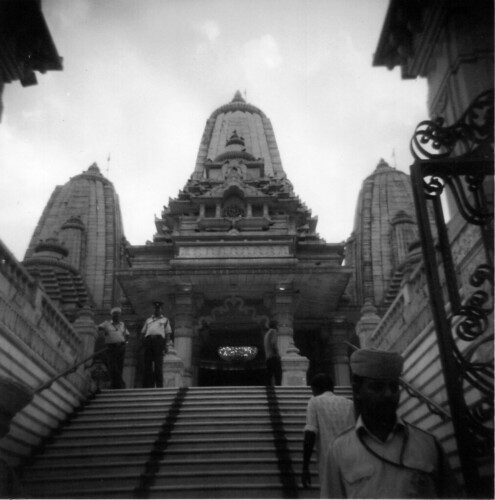
Ari is a very talented fiction writer. You can read one of his stories, "The Storyteller of Ulatphet", online at Prick of the Spindle.

Monday, September 21, 2009
Douglas, MA
My brother, Sean, found these postcards and posted them to Flickr. They show Douglas, Massachusetts. I would assume that it's around the turn of the 20th century, but perhaps he could clarify that.
Douglas is located south of Worcester in central Massachusetts. It's where our mother grew up and where my family and Erin's family currently live.
Sunday, September 20, 2009
Oldham Pond, 1936

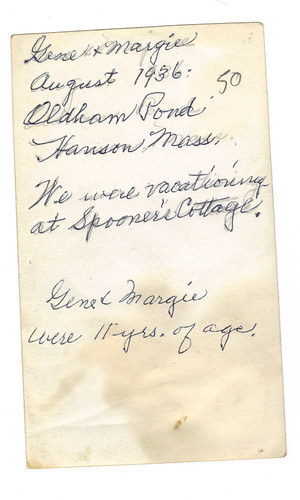
I love this photograph and I find the notes on the back so fascinating. You can still see the original notes on the reverse written in pencil. Someone went back at a later time and retraced those notes in pen. The handwriting is the same. They also added "Gene and Margie were 11 yrs. of age."
This photo captures at least five distinct experiences: 1. The day on Oldham Pond 2. The original annotation of that memory 3. the retracing of the notes and the addition of the ages 4. my purchase of the photograph 5. its new life on this website.
It's a little sad, though, that I own this photograph instead of Gene or Margie or their children or grandchildren. I feel this to be true of all the old picture we find. There's a sad period of its history during its abandonment to a box at the swap meet. Who knows how long it stayed there. And I got someone else's memory for .50 Cents.
Saturday, September 19, 2009
The Gang's All Here
Found at a swap meet in Tucson. The back reads" Coddington 416-12th str 2nd grade 1931-32 Miss Brang teacher." The kid on the far right is spazzing out.
Friday, September 18, 2009
American Flag, Arizona
Puttin' on the Boots
We found this old Polaroid at an antique store in Tucson. It's rad. This dude is named Joe Arizona.
Thursday, September 17, 2009
First Impressions
I became a strigidaphile (<--neologism (you're welcome))in 1986 when mother read me Farley Mowat's "Owls in the Family." I was six or seven years old. The book, published in 1961, is a creative nonfiction work about two owls Mowat rescued when he was a child and kept as pets. The owls, Wol and Weeps, were great horned owls. Mowat fondly recounts his memories of their time together in Saskatoon, Saskatchewan.

Two and a half decades later, I've left the barred owls and hoot owls of New England for the burrow owls and pygmy owls of the great Sonoran Desert. Somewhere between Worcester, MA and Tucson, AZ there's a vegan dude with a great wife and couple of cats looking for a lit PhD, writing some stories and taking some pictures. That's me, of course, Eric and I compiled this menagerie with the close moral support of my cat and co-conspirator, Ishmael. Ishmael and I thank you for reading and hope you enjoy.

Two and a half decades later, I've left the barred owls and hoot owls of New England for the burrow owls and pygmy owls of the great Sonoran Desert. Somewhere between Worcester, MA and Tucson, AZ there's a vegan dude with a great wife and couple of cats looking for a lit PhD, writing some stories and taking some pictures. That's me, of course, Eric and I compiled this menagerie with the close moral support of my cat and co-conspirator, Ishmael. Ishmael and I thank you for reading and hope you enjoy.
Subscribe to:
Posts (Atom)
